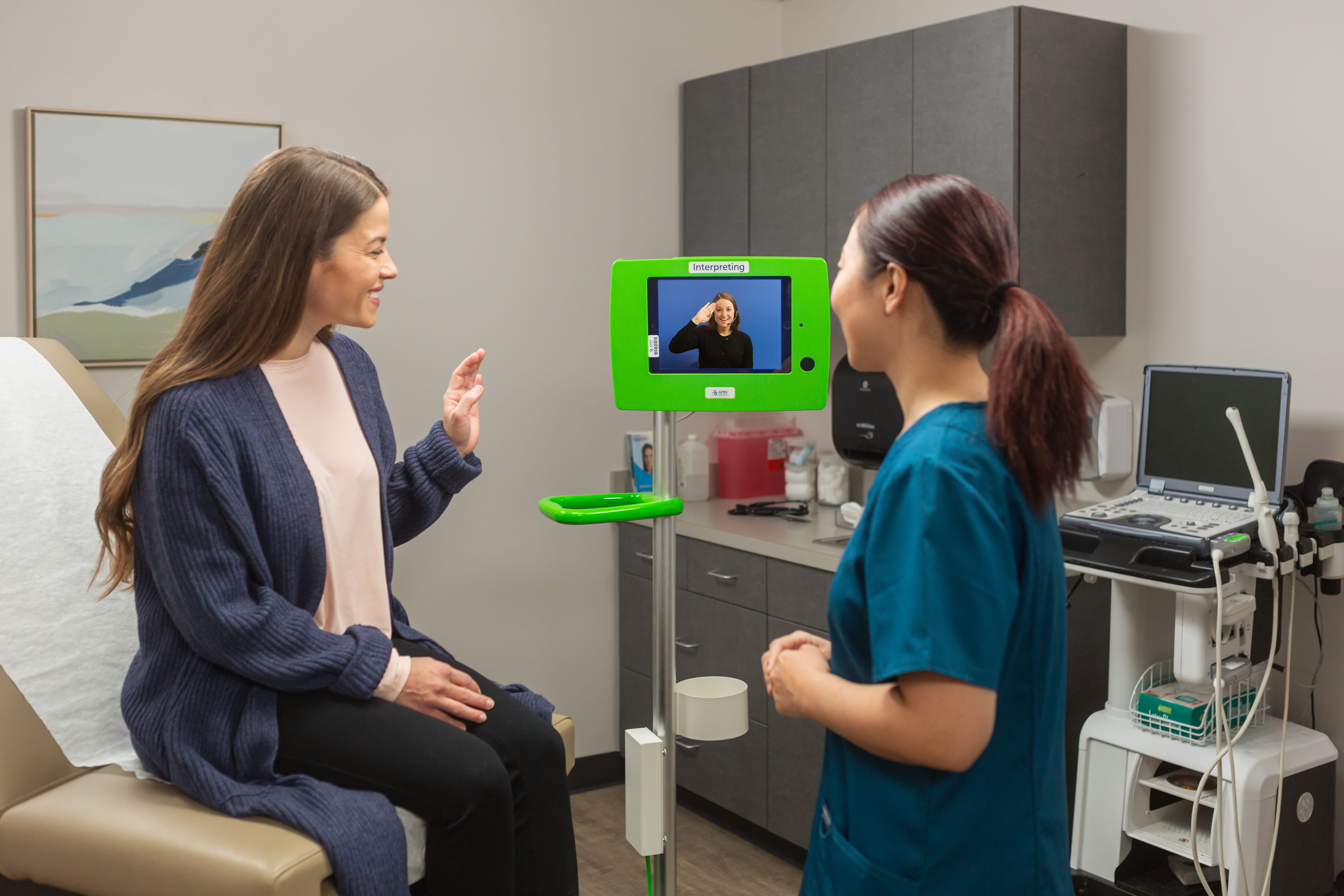If you’ve always wondered how to turn your passion for language into work as an interpreter, the time has never been better to learn about this burgeoning career path. While the United States has been a destination for immigration throughout history, that trend continues today with an increasing influx of immigrants finding their way to the United States in recent years.
The continual rise in non-English language speakers requires English language interpretation in many fields, including healthcare, which has already seen a dramatic increase in need since the beginning of the COVID-19 pandemic.
In fact, according to World Population Review1, the United States leads the globe in residents who were born in another country with 50.6 million immigrants and growing. At almost 15% of the country’s population, and with 350 to 400 languages spoken2, the need for translators and interpreters in the U.S. continues to expand.
In addition, the Bureau of Labor Statistics reports that career outlooks for translators and interpreters in the U.S. will grow by 24% by 20303, hence the country must create a workforce of trained personnel to handle mounting needs.
Translators vs. Interpreters: What You Need to Know
If you’re considering a translator or interpreter career, it’s good to understand the difference between the two fields. While both career paths require a solid grasp of language, a translator works with the written word while interpreters work in spoken or signed words between individuals (in the healthcare setting, think physician and patient, for example).
A Few Other Notable Distinctions
Interpretations typically happen live, with no scripts or dictionaries, and require the interpreter to also consider language colloquialisms, idioms, and culturally specific references when interpreting what the speaker is saying.
In many ways, an interpreter’s arsenal includes a lot of experience with both English and the additional language(s), the ability to quickly understand meaning, and a firm commitment of making sure the speaker’s intent is conveyed both accurately and in its entirety.
Translators, on the other hand, often use computer-aided tools for their work and will also refer to glossaries and translation style guide templates to ensure the quality of their translation. In addition, the work of translators is often passed on to a linguist who will proofread the document for final accuracy.
Example Roles for Interpreters and Translator Careers
While there is significant crossover in the types of career paths for language interpreters and translators, some common roles include the following:
Interpreters
|
Translators
|
| Medical Appointments |
Translating Medical Documents |
| Parent/Teacher Conferences |
Subtitles on Videos |
| Sign Language |
Multimedia |
| Live TV Coverage |
Book Translator |
| Legal Work/Proceedings |
Minutes from Business Meetings |
| Public Meetings/Community Events |
Website Content |
Healthcare Interpretation: A Growing Field with Many Career Opportunities
The rise of remote interpretation during COVID-19 was a lifeline for LEP patients (Limited English Proficiency). Telehealth systems that use telephonic and video remote interpretation (VRI) were crucial in helping patients and their caregivers overcome language barriers.
And, with advances in video technologies, interpreters can now better discern visual and auditory signals, including body language, linguistic cues, and more.
Finally, these lifesaving options can be vital in urgent situations where facilities do not have adequate interpreting staff for the vast amount of languages spoken in the U.S.
Also See
Top 6 Tips for ASL Interpreters in Healthcare Settings
Qualifications Needed for an Interpreter in Healthcare
Gaining access to the growing number of interpreter jobs in the country does require proof of language proficiency and interpreting qualification credentials including certifications for many languages through either the Certification Commission for Healthcare Interpreters (CCHI) or the National Board for Certified Medical Interpreters.
Qualification for both certifications can vary slightly, but both programs require the following:
- Be at least 18 years old
- Have a High School diploma or GED equivalency
- Completion of at least 40 hours of medical interpreting training
- Proficiency in the English Language
- A desire to make a difference in the medical field
Types of Healthcare Facilities Where English Language Interpreters Work
The vast array of settings for medical interpreters grows every day, but the following list demonstrates how much need there is for the services of these professionals. The beauty of these types of jobs is that most of them can be done remotely from the comfort of your home office or in a space you’ve deemed your work area.
- Hospitals
- Clinics
- Private Practices
- Trauma Facilities
AMN Healthcare’s Language Services Division
AMN Healthcare Language Services is an industry-leading language interpreting provider that uses a technology-driven solution to bridge communication gaps between patients and medical professionals—thus facilitating the equity and continuance of care for all.
Our language access services include opportunities for interpreters to work in a variety of modalities. Many of our professionals begin working in one modality and then decide to transition to other interpretation opportunities within the company, including interpreting on various telehealth platforms.
How Will You Work as an Interpreter for AMN Healthcare?
 |
 |
 |
 |
|
| Video |
Audio/Over the Phone |
In Person |
Telehealth |
|
Qualifications for Applying at AMN Healthcare

For Sign Language Interpreters
- National certification at or above NAD level 4, RID CSC, RID CDI, CI/CT, NIC, or BEI Advanced
- Minimum of 2 years of community / medical interpreting experience
- Familiar with state laws and the Americans with Disabilities Act
- Extensive working knowledge of the NAD/RID Code of Professional Conduct and Deaf Culture
For Spoken Language Interpreters
- Fluency in English and target language
- Minimum 6 months of community/medical interpreting experience or formal training (minimum of 40-hrs training from an accredited medical interpreting course)
- National certification in medical interpretation or medical interpreter language proficiency assessment
- Working knowledge of the National Code of Ethics and Standards of Practice for Medical Interpreters
Benefits for Our Valuable Healthcare Interpreters
- Guaranteed Work Schedule
- Competitive Pay
- Matching 401k
- Paid Time Off for both full & part time employees
- Referral Bonuses
- Health Insurance (for full time employees only)
- Professional development opportunities
- Management by supportive and knowledgeable interpreting professionals
Join our Career-Focused Team of Interpreters
To learn more on how you can create a career path of interpreting at AMN Healthcare, connect with one of our experienced team members by emailing us at LanguageServicesRecruitment@amnhealthcare.com or visiting our Language Interpreters Careers page.
Read the Interpreter Career Guide
Sources
1Immigration by Country 2022, https://worldpopulationreview.com/country-rankings/immigration-by-country
2Language Data for the United States of America, https://translatorswithoutborders.org/language-data-for-the-united-states-of-america
3Occupational Outlook Handbook, Interpreters and Translators, https://www.bls.gov/ooh/media-and-communication/interpreters-and-translators
4 Demographic Turning Points for the United States: Population Projections for 2020 to 2060, https://www.census.gov/content/dam/Census/library/publications/2020/demo/p25-1144.pdf





